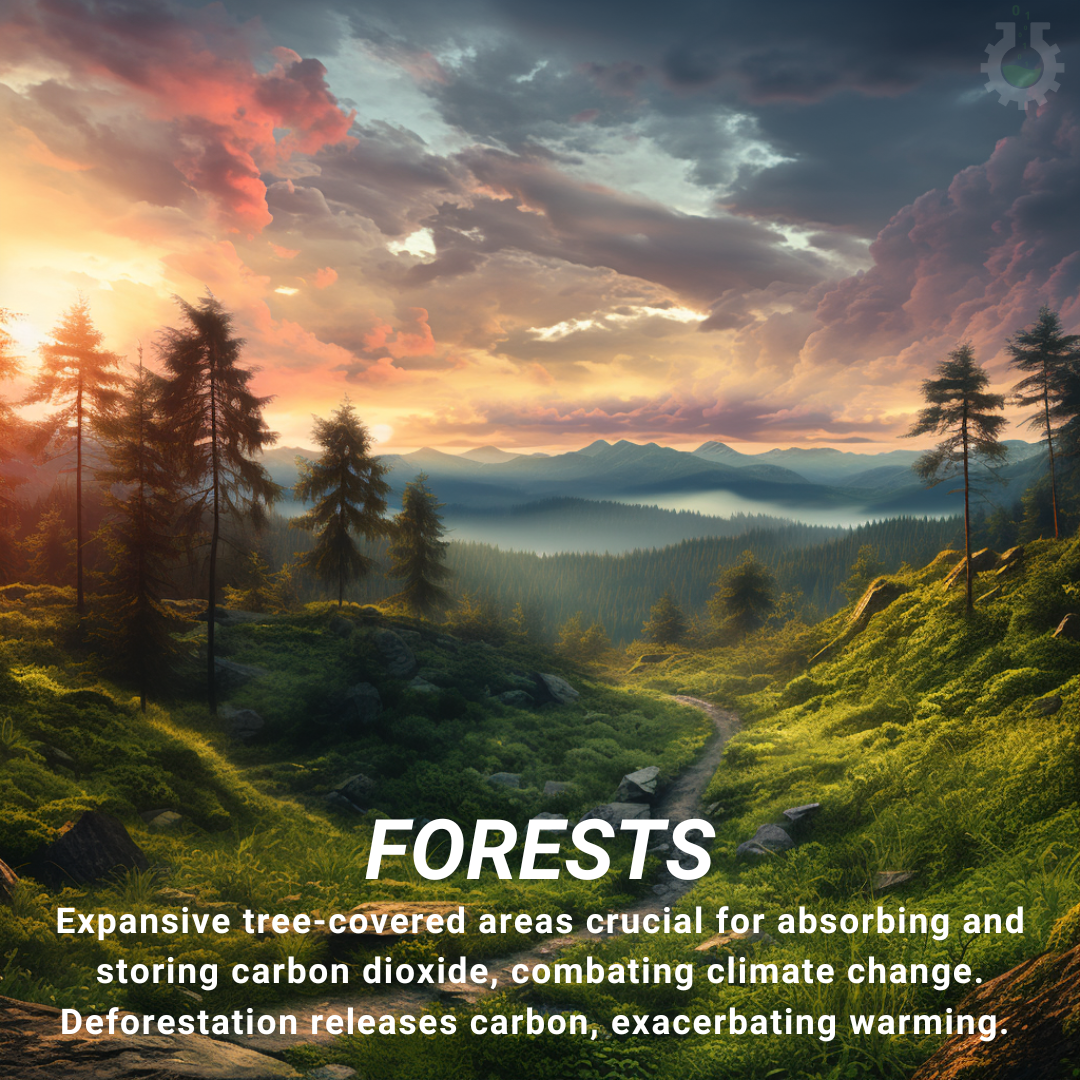September 19, 2023
Climate Change Poster Collection of the Day – Forests
Book a Demo
Today’s Climate Change Poster Collection highlights Forests, the biodiversity powerhouses of our planet, serve as an invaluable resource for both the environment and the economy. Teeming with life, these dense green expanses are home to more than half of all terrestrial species on Earth. They cover a whopping 30% of the Earth’s land surface, making them the primary habitat for a significant portion of global biodiversity.
In addition to their role as living sanctuaries, forests are critical in the fight against climate change. They function as significant carbon sinks, absorbing more carbon than they emit. Thus, they play a vital role in regulating global climate systems, serving as a natural buffer against the ongoing climate crisis. The carbon sequestration abilities of these lush habitats are instrumental in reducing the levels of harmful greenhouse gases in the atmosphere.
Forests also provide us with a multitude of resources. Timber is perhaps the most well-known product derived from forests, but these ecosystems offer much more. Non-timber products such as fruits, nuts, and medicinal plants are also harvested sustainably from forests. Beyond these tangible goods, forests provide ecosystem services that are often overlooked. They purify water by filtering pollutants and controlling water flow. They also conserve soil by preventing erosion, maintaining fertility, and fostering microbial communities.
However, these environmental powerhouses are under threat. Deforestation and forest degradation, primarily driven by agriculture and urbanization, pose significant challenges to the health and survival of forests. Climate change only exacerbates these threats, altering the very nature of these ecosystems.
Climate change is leading to longer fire seasons, resulting in more frequent and severe fires. This is particularly noticeable in the U.S. West, where devastating wildfires have become increasingly common. These changes are also shifting species distributions, which could significantly alter forest composition and disrupt the balance of these ecosystems.
Moreover, climate change has a hand in the spread of pests and diseases in forests. Changes in temperature and precipitation patterns create conditions that are conducive to the proliferation of these destructive agents, thereby affecting forest health and productivity.
The impacts of climate change are not limited to the biological realm; they also have socio-economic implications. The ability of forests to absorb carbon dioxide is being compromised, which has far-reaching effects on our climate regulation efforts. Additionally, the socio-economic benefits derived from forests, such as employment and income from forest-based industries, are also at risk.
Extreme weather events, such as hurricanes and droughts, are becoming more frequent and intense due to climate change. These events can have devastating impacts on forests, causing widespread damage and loss of life.
While forests are an essential part of our planet’s life support system, they are increasingly under threat. It is crucial that we work towards mitigating these threats and preserving these remarkable ecosystems for future generations.
Discover an inspiring collection of climate change posters.



